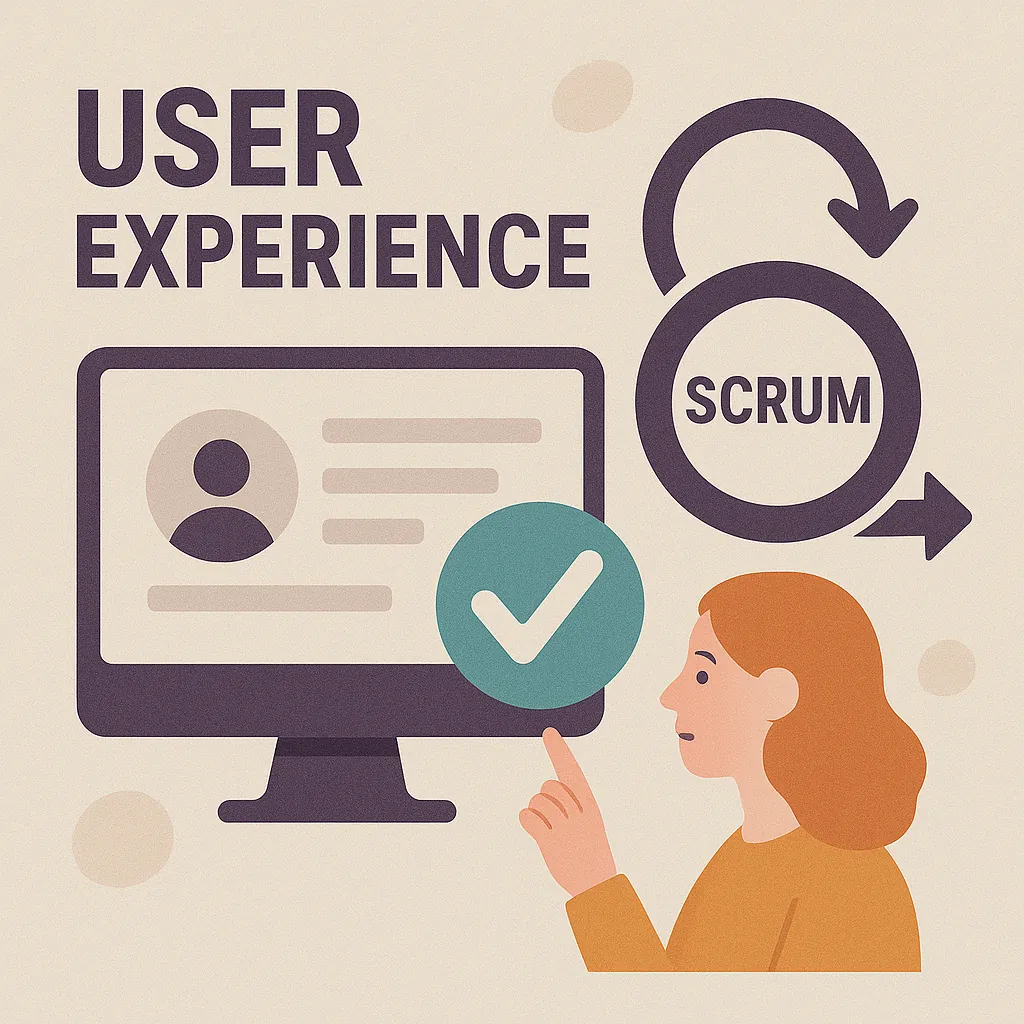Introduction
Scrum software plays a pivotal role in facilitating agile methodologies, enabling teams to collaborate effectively, manage tasks, and deliver projects in iterative cycles. Scrum software is designed to support the Scrum framework, which emphasizes teamwork, accountability, and continuous improvement. It provides essential features such as sprint planning, backlog management, and progress tracking, all of which are crucial for maintaining productivity and ensuring that project goals are met efficiently.
However, the effectiveness of Scrum software is not solely determined by its features or functionalities; it is significantly influenced by user experience (UX). UX encompasses all aspects of the end-user’s interaction with the software, including usability, accessibility, and overall satisfaction. A well-designed user experience can enhance the way teams engage with the software, making it easier to navigate, understand, and utilize its capabilities. Conversely, a poor UX can lead to frustration, decreased productivity, and ultimately, a failure to achieve project objectives.
The impact of UX on Scrum tools is profound. When UX is prioritized, it can streamline workflows, reduce the learning curve for new users, and foster a more collaborative environment. This is particularly important for UX designers and product managers, who must ensure that the tools they choose not only meet functional requirements but also provide an intuitive and enjoyable user experience. By focusing on UX, teams can maximize the potential of their Scrum software, leading to improved project outcomes and a more engaged workforce.
Understanding Scrum and Its Workflow
Scrum is a widely adopted agile framework that enables teams to work collaboratively and efficiently on complex projects. It is characterized by its structured approach, which includes defined roles, events, and artifacts that guide the workflow. Understanding these key principles is essential for UX designers and product managers when evaluating Scrum software, as the user experience can significantly influence the effectiveness of the Scrum process.
Key Principles of Scrum
- Roles: Scrum defines three primary roles:
- Product Owner: Responsible for maximizing the value of the product and managing the product backlog.
- Scrum Master: Acts as a facilitator for the Scrum team, ensuring that the Scrum process is followed and removing any impediments.
- Development Team: A cross-functional group that works together to deliver increments of the product.
- Events: Scrum includes several key events that structure the workflow:
- Sprint: A time-boxed period (usually 1-4 weeks) during which a potentially shippable product increment is created.
- Sprint Planning: A meeting where the team defines what will be delivered in the upcoming sprint.
- Daily Scrum: A short daily meeting for the team to synchronize activities and plan for the next 24 hours.
- Sprint Review: A meeting at the end of the sprint to inspect the increment and adapt the product backlog if needed.
- Sprint Retrospective: A meeting for the team to reflect on the past sprint and identify improvements for the next one.
- Artifacts: Scrum artifacts provide transparency and opportunities for inspection and adaptation:
- Product Backlog: An ordered list of everything that is known to be needed in the product.
- Sprint Backlog: A list of tasks to be completed during the sprint, derived from the product backlog.
- Increment: The sum of all the product backlog items completed during a sprint and all previous sprints.
Facilitating Communication and Collaboration
Effective Scrum software plays a crucial role in enhancing communication and collaboration within teams. It provides a centralized platform where team members can:
- Share updates and progress on tasks in real-time.
- Access and manage the product and sprint backlogs efficiently.
- Visualize workflows through boards and charts, which can help in tracking progress and identifying bottlenecks.
By streamlining communication, Scrum software fosters a collaborative environment that is essential for the success of agile projects. A well-designed user interface can enhance this experience, making it easier for team members to engage with the software and each other.
Common Challenges in Scrum Implementation
Despite its benefits, teams often face challenges when implementing Scrum. Some common issues include:
- Lack of Clarity: Teams may struggle with understanding their roles or the Scrum process itself.
- Ineffective Communication: Miscommunication can lead to misunderstandings and delays.
- Resistance to Change: Team members may be hesitant to adopt new practices or tools.
Scrum software can address these challenges by:
- Providing clear documentation and resources that help teams understand their roles and responsibilities.
- Offering features that facilitate communication, such as chat functions, notifications, and integration with other tools.
- Supporting a culture of continuous improvement through retrospectives and feedback mechanisms.
User Experience: The Heart of Effective Scrum Software
User experience (UX) is a critical aspect of software applications, particularly in the context of Scrum tools. It encompasses the overall experience a user has when interacting with a digital product, including usability, satisfaction, efficiency, and emotional response. In Scrum software, a well-designed UX can significantly enhance how teams collaborate, manage tasks, and achieve their goals.
Defining User Experience in Scrum Software
In the realm of Scrum software, UX refers to how intuitive and user-friendly the tool is for team members. This includes the ease of navigation, clarity of information presented, and the overall aesthetic appeal of the interface. A positive UX ensures that users can efficiently access the features they need without unnecessary complexity or confusion. This is particularly important in Agile environments, where teams must adapt quickly and maintain focus on their objectives [2][3].
The Impact of Good UX on Productivity and Team Satisfaction
A well-designed user experience can lead to significant improvements in productivity and team satisfaction. When Scrum tools are intuitive and easy to use, team members can spend less time figuring out how to navigate the software and more time focusing on their tasks. This efficiency not only boosts productivity but also enhances team morale, as users feel empowered and supported by the tools they are using. Research indicates that investing in UX design can create products that resonate with users, ultimately driving business success [5][9].
Moreover, a positive UX fosters collaboration among team members. When everyone can easily access and understand the Scrum tool, it encourages open communication and a shared understanding of project goals. This collaborative environment is essential for Agile methodologies, where teamwork and adaptability are paramount [4][10].
Examples of Poor UX and Its Negative Impacts
Conversely, poor user experience can severely hinder the effectiveness of Scrum tools. For instance, if a Scrum software interface is cluttered or unintuitive, users may struggle to find essential features, leading to frustration and wasted time. This can result in decreased productivity, as team members may spend more time troubleshooting software issues than completing their tasks.
Additionally, a lack of clear information or guidance within the tool can lead to misunderstandings about project status or team responsibilities. This confusion can create misalignment within the team, ultimately impacting project outcomes and deadlines. In extreme cases, a poorly designed Scrum tool can lead to team disengagement, as users may feel overwhelmed or unsupported by the software [6][9].
Key UX Features to Look for in Scrum Software
When selecting Scrum software, the user experience (UX) is a critical factor that can significantly influence the effectiveness of the tool. A well-designed interface not only enhances usability but also fosters collaboration and productivity among team members. Here are some essential UX features to consider:
- Intuitive Navigation and User Interface Design: The software should have a clean and straightforward interface that allows users to navigate easily. An intuitive design minimizes the learning curve, enabling team members to focus on their tasks rather than struggling with the tool itself. This is crucial for maintaining momentum in fast-paced Scrum environments [9].
- Customization Options for Different Roles: Different team members, such as Scrum Masters, Product Owners, and Team Members, have unique needs and responsibilities. The software should offer customization options that allow users to tailor their dashboards and views according to their roles. This personalization enhances user satisfaction and ensures that each member can access the information most relevant to them [8].
- Integration Capabilities with Other Tools and Platforms: In today’s interconnected work environment, the ability to integrate with other tools (like communication platforms, documentation tools, and analytics software) is vital. Effective Scrum software should seamlessly connect with existing tools to streamline workflows and reduce the need for switching between applications, thereby improving overall efficiency [7].
- Real-Time Collaboration Features: Features that facilitate real-time collaboration, such as comments, notifications, and shared workspaces, are essential for Scrum teams. These capabilities allow team members to communicate effectively, share updates, and provide feedback instantly, which is crucial for maintaining alignment and transparency throughout the project lifecycle [8].
- Mobile Accessibility and Responsiveness: With the increasing reliance on mobile devices, Scrum software must be accessible on various platforms, including smartphones and tablets. A responsive design ensures that users can manage their tasks and collaborate with team members on the go, enhancing flexibility and productivity [10].
Incorporating these UX features into Scrum software not only improves usability but also enhances the overall effectiveness of Scrum practices. By prioritizing user experience, teams can ensure that their chosen tools support their agile methodologies and foster a collaborative environment.
Evaluating the UX of Popular Scrum Software
Particularly within Agile methodologies like Scrum, the user experience (UX) of software tools plays a pivotal role in determining their effectiveness. A well-designed interface can enhance team collaboration, streamline workflows, and ultimately lead to successful project outcomes. Below, we evaluate some of the most popular Scrum software tools, focusing on their UX features, user feedback, and standout capabilities.
1. Jira
Jira is widely recognized as a comprehensive project management tool that offers extensive features for Scrum teams. However, its UX can be a double-edged sword:
- Pros: Jira provides a robust set of functionalities, including customizable dashboards, burndown charts, and sprint planning tools, which are essential for Scrum teams [12]. Its integration capabilities with other tools also enhance its usability.
- Cons: Many users report that Jira’s interface can be overwhelming, especially for newcomers. The complexity of its features may lead to a steep learning curve, which can hinder team productivity [4].
- User Feedback: While experienced users appreciate its depth, new users often find it challenging to navigate, suggesting that improved onboarding processes could enhance the overall UX.
2. Trello
Trello is known for its simplicity and visual appeal, making it a favorite among teams looking for an intuitive Scrum tool.
- Pros: The drag-and-drop interface allows for easy task management, and its card-based system is visually engaging. Trello’s straightforward design promotes quick adoption among team members [12].
- Cons: While Trello excels in basic task management, it may lack some advanced features that larger teams require for comprehensive Scrum management.
- User Feedback: Users appreciate Trello’s ease of use and flexibility, often citing it as a great starting point for teams new to Scrum.
3. Asana
Asana combines project management with a focus on team collaboration, making it a strong contender in the Scrum software space.
- Pros: Asana’s user interface is clean and organized, with features like task dependencies and timeline views that facilitate effective project tracking [12]. The ability to customize workflows enhances its usability for Scrum teams.
- Cons: Some users have noted that while Asana is user-friendly, it can become cluttered with too many tasks or projects, which may detract from the overall UX.
- User Feedback: Many users highlight Asana’s collaborative features, which foster communication and transparency within teams.
4. VivifyScrum
VivifyScrum is tailored specifically for Agile project management, offering a user-friendly interface that stands out in the market.
- Pros: It features an agile board, scrum board, and Kanban board, all designed with a focus on usability. The intuitive design allows teams to manage their projects effectively without extensive training [3][8].
- Cons: While it offers a great UX, some users may find it lacks the depth of features available in more established tools like Jira.
- User Feedback: Users frequently commend VivifyScrum for its clean design and ease of use, making it an excellent choice for teams prioritizing UX.
Standout Tools with Exceptional UX
Among the tools evaluated, VivifyScrum emerges as a standout option due to its focus on user experience tailored for Agile methodologies. Its intuitive interface and comprehensive features make it particularly appealing for teams looking to enhance their Scrum practices without the complexity often associated with other tools like Jira.
The Role of UX Designers in Scrum Software Development
User Experience (UX) designers play a crucial role in the software development lifecycle, particularly in the context of Scrum tools. Their involvement can significantly enhance the effectiveness of these tools, ensuring that they meet the needs of users while facilitating agile methodologies. Here are some key aspects of their contribution:
- Defining the Role of UX Designers: UX designers are responsible for understanding user needs and behaviors, which is essential in creating software that is not only functional but also intuitive and engaging. They conduct user research, create personas, and develop user journeys to ensure that the design aligns with the users’ expectations and workflows. This understanding helps in building a shared vision among the development team, which is vital in a Scrum environment where collaboration is key [6][5].
- Informing Design Through UX Research: UX research is instrumental in shaping the design of Scrum tools. By employing various research methods such as interviews, surveys, and usability testing, UX designers gather insights that inform the design process. This research helps identify pain points and areas for improvement, ensuring that the tools developed are user-centered and address real-world challenges faced by teams. The insights gained from UX research can guide decision-making for Product Owners and Scrum Masters, leading to a more user-centric approach in tool development [8][10].
- Importance of User Testing and Feedback: Iterative design is a fundamental principle of both UX and Scrum. User testing and feedback are critical components of this process, allowing designers to validate their assumptions and make necessary adjustments based on real user interactions. By incorporating user feedback into each iteration, UX designers can refine the tools to better meet user needs, ultimately enhancing the overall effectiveness of the Scrum process. This continuous loop of testing and feedback ensures that the tools evolve in alignment with user expectations and technological advancements [11][14].
Best Practices for Product Managers in Selecting Scrum Software
When it comes to selecting Scrum software, the user experience (UX) plays a pivotal role in determining the effectiveness of the tool. For product managers, understanding how to evaluate and choose the right software can significantly enhance team collaboration and productivity. Here are some actionable strategies to consider:
- Conduct Thorough UX Assessments: Before finalizing any Scrum software, it is essential to conduct comprehensive UX assessments. This involves evaluating the software’s interface, usability, and overall user satisfaction. A tool that is intuitive and easy to navigate can reduce the learning curve for team members, leading to quicker adoption and more effective use of the software. Engaging UX designers in this assessment can provide valuable insights into how the software can meet user needs and expectations.
- Engage Team Members in Evaluation: Involving team members in the evaluation process is crucial. Their firsthand experience and feedback can highlight specific requirements and preferences that may not be apparent to product managers alone. Organizing workshops or demo sessions where team members can interact with different software options allows for a collaborative decision-making process. This engagement not only fosters a sense of ownership but also ensures that the selected tool aligns with the team’s dynamics and workflows.
- Prioritize Tools that Align with Team Workflows and Culture: Each team has its unique workflows and culture, which should be reflected in the chosen Scrum software. Product managers should prioritize tools that seamlessly integrate into existing processes and enhance collaboration. For instance, if a team heavily relies on visual project management, selecting software that offers robust visual tools and dashboards can significantly improve efficiency. Understanding the team’s culture—whether they prefer structured processes or more flexible approaches—can also guide the selection of software that complements their working style.
- Continuously Gather User Feedback Post-Implementation: The selection process does not end with the implementation of the software. Continuous user feedback is vital to ensure that the tool remains effective and meets evolving team needs. Establishing regular check-ins or feedback sessions can help identify any challenges or areas for improvement. This iterative approach allows product managers to make necessary adjustments, ensuring that the software continues to support the team’s objectives and enhances overall productivity.
By focusing on these best practices, product managers can make informed decisions when selecting Scrum software, ultimately leading to improved user experience and more successful project outcomes.
Conclusion
Particularly within Scrum methodologies, the significance of user experience (UX) cannot be overstated. A well-designed Scrum software tool can significantly enhance team collaboration, streamline workflows, and ultimately lead to more successful project outcomes. Here are the key takeaways regarding the importance of UX in Scrum software:
- Maximizing Effectiveness: The effectiveness of Scrum tools is heavily influenced by their user experience. Tools that are intuitive and user-friendly enable teams to focus on their tasks rather than struggling with the software itself. This leads to improved productivity and a more seamless integration of Scrum practices into daily operations. When UX is prioritized, teams can better leverage the features of the software, resulting in enhanced communication and collaboration among team members [1][5].
- Prioritizing UX in Decision-Making: For UX designers and product managers, it is crucial to prioritize user experience when selecting Scrum software. This means evaluating tools not just on their features but also on how easily team members can navigate and utilize them. A tool that is difficult to use can hinder the Scrum process, leading to frustration and inefficiencies. By advocating for UX considerations in the decision-making process, professionals can ensure that their teams are equipped with the best possible tools to succeed [6][7].
In summary, the intersection of user experience and Scrum software is a critical area that warrants attention. By recognizing the importance of UX, professionals can enhance their project management practices and drive better results for their teams.
Find out more about Shaun Stoltz https://www.shaunstoltz.com/about/.
This post was written by an AI and reviewed/edited by a human.



